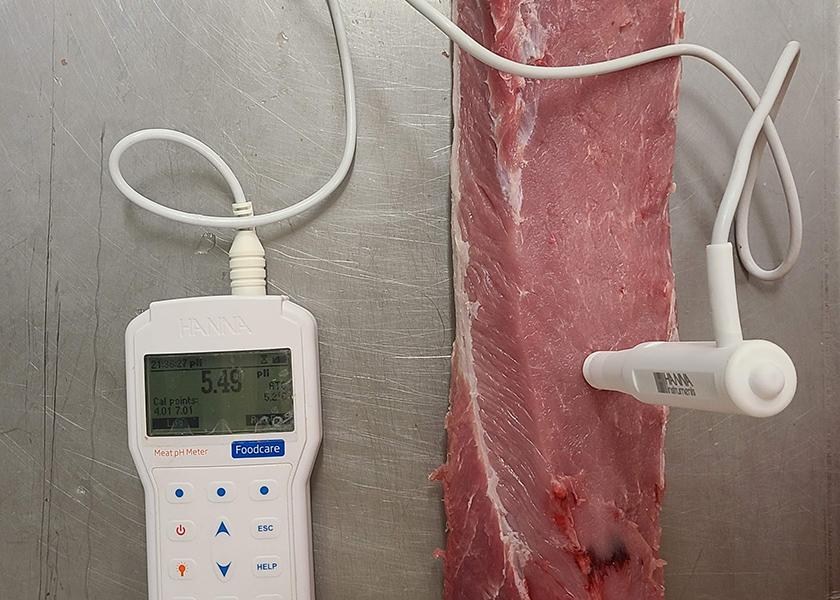Getting Back to Basics: The Role of pH in Pork Quality

Ask a group of meat scientists what the most important factor in determining meat quality is, and my bet is the most common answer you will hear is pH.
In case it has been a minute since your last chemistry class, let’s review what exactly pH is. Technically, pH is the decimal logarithm of the reciprocal of the hydrogen ion activity in a solution. Put more simply, pH measures how acidic or basic a substance is. Foods with an acidic pH of less than 7 include sodas, baked goods, cheeses and some fruits and fruit juices. Foods that are more basic or alkaline, with a pH of greater than 7, include many vegetables, nuts, leafy greens and milk.
Typically, the pH of fresh meat is between 5.4-5.8 making it slightly acidic. The pH of living muscle is slightly basic at just over 7. During the slaughter and chilling process, the pH of muscle declines as the muscle uses up its stored energy.
The reason this pH decline is important is because how fast and how much the pH of muscle falls after slaughter during this conversion of muscle to meat, can influence its color, ability to hold water during storage and cooking, and its tenderness. If the pH is too acidic, meat can have a pale color and tend to lose water resulting in a poor eating experience. But if pH is too basic, it can have a shorter shelf-life because it is more conducive to bacterial growth.
In other words, meat pH is like many things in life—you want it to be not too high but not too low. When pH is ‘just right’, high quality pork can happen.
Meat processors also take advantage of the properties of pH while making further processed products like summer sausage, salami and other fermented sausages. Fermentation uses bacteria to produce acidic compounds and lower the pH of foods. In fermented sausages, this more acidic pH changes its flavor, texture and water-holding capacity. The characteristic sour taste of some fermented sausages like Genoa salami or sopressata are a result of this process.
Pork producers might remember “halothane pigs.” In addition to these pigs being more susceptible to stress, they also experienced an abnormally fast pH decline after slaughter. This resulted in pork that was pale in color, a soft, squishy texture, and did not hold water during storage or cooking. Basically, a less than desirable pork chop.
But genetics is not the only factor in determining the pH of pork. How long pigs are held off feed prior to slaughter, stress during loading, transport, handling at the plant and in-plant factors like stunning and chilling can also affect pork’s pH. That is why it’s important for all of us, not just meat scientists, to be concerned about pork quality. Though it seems pretty basic, many sectors of the pork supply chain must work together to optimize the pH of pork and produce a high-quality product.
More from Farm Journal's PORK:
Meat Matters: One Less Thing to Worry About







